PENGUIN

CLASSICS
A TALE OF TWO CITIES
CHARLES DICKENS was born in Portsmouth on 7 February 1812, the second of eight children. Dickenss childhood experiences were similar to those depicted in David Copperfield . His father, who was a government clerk, was imprisoned for debt and Dickens was briefly sent to work in a blacking warehouse at the age of twelve. He received little formal education, but taught himself shorthand and became a reporter of parliamentary debates for the Morning Chronicle . He began to publish sketches in various periodicals, which were subsequently republished as Sketches by Boz. The Pickwick Papers was published in 18367 and after a slow start became a publishing phenomenon and Dickenss characters the centre of a popular cult. Part of the secret of his success was the method of cheap serial publication he adopted; thereafter, all Dickenss novels were first published in serial form. He began Oliver Twist in 1837, followed by Nicholas Nickleby (1838) and The Old Curiosity Shop (184041). After finishing Barnaby Rudge (1841) Dickens set off for America; he went full of enthusiasm for the young republic but, in spite of a triumphant reception, he returned disillusioned. His experiences are recorded in American Notes (1842). A Christmas Carol , the first of the hugely popular Christmas Books , appeared in 1843, while Martin Chuzzlewit , which included a fictionalized account of his American travels, was first published over the period 18434. During 18446 Dickens travelled abroad and he began Dombey and Son while in Switzerland. This and David Copperfield (184950) were more serious in theme and more carefully planned than his early novels. In later works, such as Bleak House (1853) and Little Dorrit (1857), Dickenss social criticism became more radical and his comedy more savage. In 1850 Dickens started the weekly periodical Household Words , succeeded in 1859 by All the Year Round ; in these he published Hard Times (1854), A Tale of Two Cities (1859) and Great Expectations (186061). Dickenss health was failing during the 1860s and the physical strain of the public readings which he began in 1858 hastened his decline, although Our Mutual Friend (1865) retained some of his best comedy. His last novel, The Mystery of Edwin Drood , was never completed and he died on 9 June 1870. Public grief at his death was considerable and he was buried in the Poets Corner of Westminster Abbey.
RICHARD MAXWELL took a doctorate in English literature from the University of Chicago. The author of The Mysteries of Paris and London (1992), and editor of The Victorian Illustrated Book (2002), he has also written extensively on the historical novels of John Cowper Powys. He is now working on a study of historical fiction between the seventeenth century and the present. He teaches in the Comparative Literature and English departments at Yale University.
KRISTIE ALLEN is a Visiting Assistant Professor at Macalester College, where she teaches courses in Victorian literature. In addition to writing on Charles Dickens, she has articles forthcoming on George Eliots The Mill on the Floss and on Victorian melodrama.
C HARLES D ICKENS
A TALE OF TWO CITIES
A Penguin Enriched eBook Classic
Edited with an Introduction and Notes by RICHARD MAXWELL
Enriched eBook Features Editor KRISTIE ALLEN
PENGUIN BOOKS
PENGUIN BOOKS
Published by the Penguin Group
Penguin Books Ltd, 80 Strand, London WC 2 R ORL , England
Penguin Putnam Inc., 375 Hudson Street, New York, New York 10014, USA
Penguin Books Australia Ltd, 250 Camberwell Road, Camberwell, Victoria 3124, Australia
Penguin Books Canada Ltd, 10 Alcorn Avenue, Toronto, Ontario, Canada M 4 V 3 B 2
Penguin Books India (P) Ltd, 11 Community Centre, Panchsheel Park, New Delhi110 017, India
Penguin Books (NZ) Ltd, Cnr Rosedale and Airborne Roads, Albany, Auckland, New Zealand
Penguin Books (South Africa) (Pty) Ltd, 24 Sturdee Avenue, Rosebank 2196, South Africa
Penguin Books Ltd, Registered Offices: 80 Strand, London WC 2 R ORL , England
www.penguin.com
ISBN: 978-1-4406-5761-0
First published by All the Year Round , 1859
Published in Penguin Classics 2000
Reprinted with updated editorial material, revised Dickens Chronology and new appendix 2003
I
Editorial material copyright Richard Maxwell, 2000, 2003
A Dickens Chronology copyright Stephen Wall, 1995, 2003
Penguin Enriched E-book Classics Features copyright Kristie Allen, 2008
All rights reserved
The moral right of the editor has been asserted
CONTENTS
P ENGUIN E NRICHED E B OOK C LASSICS F EATURES
ACKNOWLEDGEMENTS
For their help with this edition, I would like to thank Ian Duncan, Andreas Gailus, Deidre Lynch, William Olmstead, Katie Trumpener, Diana Matthias, of the Snite Museum of Art, University of Notre Dame, and, at Penguin Books, Robert Mighall and Lindeth Vasey.
INTRODUCTION
In an early chapter of A Tale of Two Cities , Mr Lorry walks towards Soho to visit his friends the Manettes. The quiet lodgings of Doctor Manette were in a quiet street-corner not far from Soho-squareIt was a cool spot, staid but cheerful, a wonderful place for echoes, and a very harbour from the raging streets (II.6). While there, Lorry converses with the housekeeper Miss Pross, who informs him that crowds and multitudes of people have been turning up on the doorstep, apparently as suitors of Manettes daughter Lucie. Lorry looks all evening for the hundreds of people whom he has been led to expect, but only a few appear; the hundreds in question remain only echoes, echoes of other steps that never came.
There are occasions in A Tale when hundreds, even thousands, of people do appear. The novel describes several scenes from the French Revolution which would call (and every so often have called) on the full resources of a major Hollywood studio. Furthermore, of all Dickenss books, with the exception of Barnaby Rudge (1841), this one has the clearest claim to belong to that ambitious genre, historical fiction. Nonetheless, it remains basically a small-scale work that somehow succeeds in giving a larger-than-life impression of itself. Those who recall A Tale after having read it long ago are especially liable to think of it as featuring vast, howling mobs and dizzying epic scenes; the intimacy of the story, its frequent concentration on understated incidents involving just a few characters, is often forgotten. Like the quiet street-corner where Dr Manette resides, A Tale seems to function as a kind of echo-chamber; it is an intimate book which somehow evokes the epic presence of crowds and the vast movements of history.
Something of the novels intimacy and compression are implicit in the circumstances of its publication. Dickens composed A Tale for his newly established weekly All the Year Round . The first instalment appeared in the first number of the periodical, on 30 April 1859. Soon after this, he wrote to his friend John Forster: The small portions [of the novel in the magazine] drive me frantic, and in another letter he added this plaintive remark: Nothing but the interest of the subject, and the pleasure of striving with the difficulty of the form of treatmentnothing in the way of mere money, I meancould else repay the time and trouble of the incessant condensation.
After A Tale had achieved book form, no one needed, ever again, to sip it even in the more capacious tablespoons of the monthly parts; the complete story was available for consumption at one sitting, should a reader desire. All the same, the novel betrays or even advertises its own incessant condensations, its terseness and closeness of construction. On the other hand, though A Tale borrows extensively from particular passages in The French Revolution , it asks to be judged by a different standard, one which honours above all concision, reticence and implication rather than the grander virtues typically associated with Dickens and Carlyle alike. Dickenss gesture of setting his own work next to The French Revolution emphasizes both that his novel is more modest in its ambitions than is his friends weighty history, and also that, by one means or another, the Tale , an echo-chamber of a novel, has its own special means of getting a big effect in a limited space. If Dickens in any sense competes with Carlyle, he does so on his own especially chosen ground.

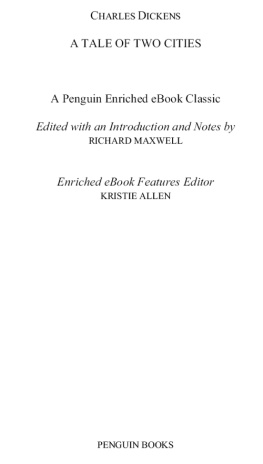

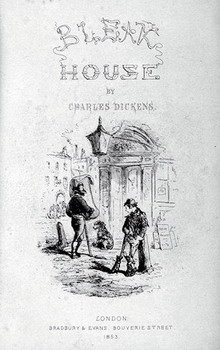
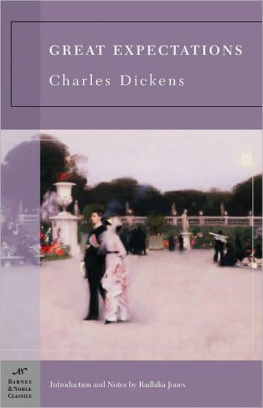

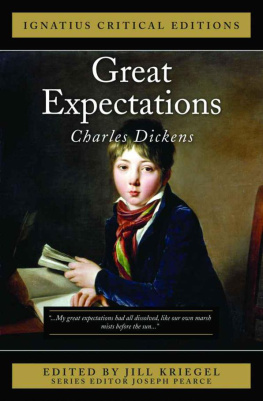
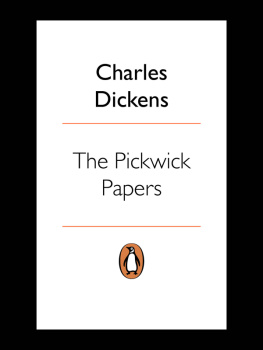
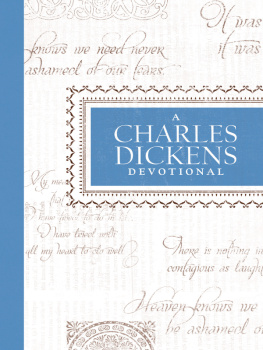
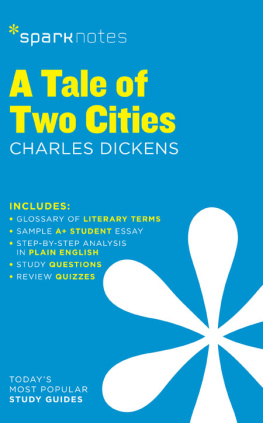


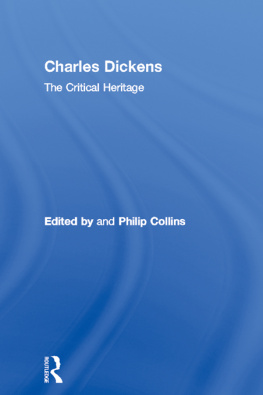

 CLASSICS
CLASSICS